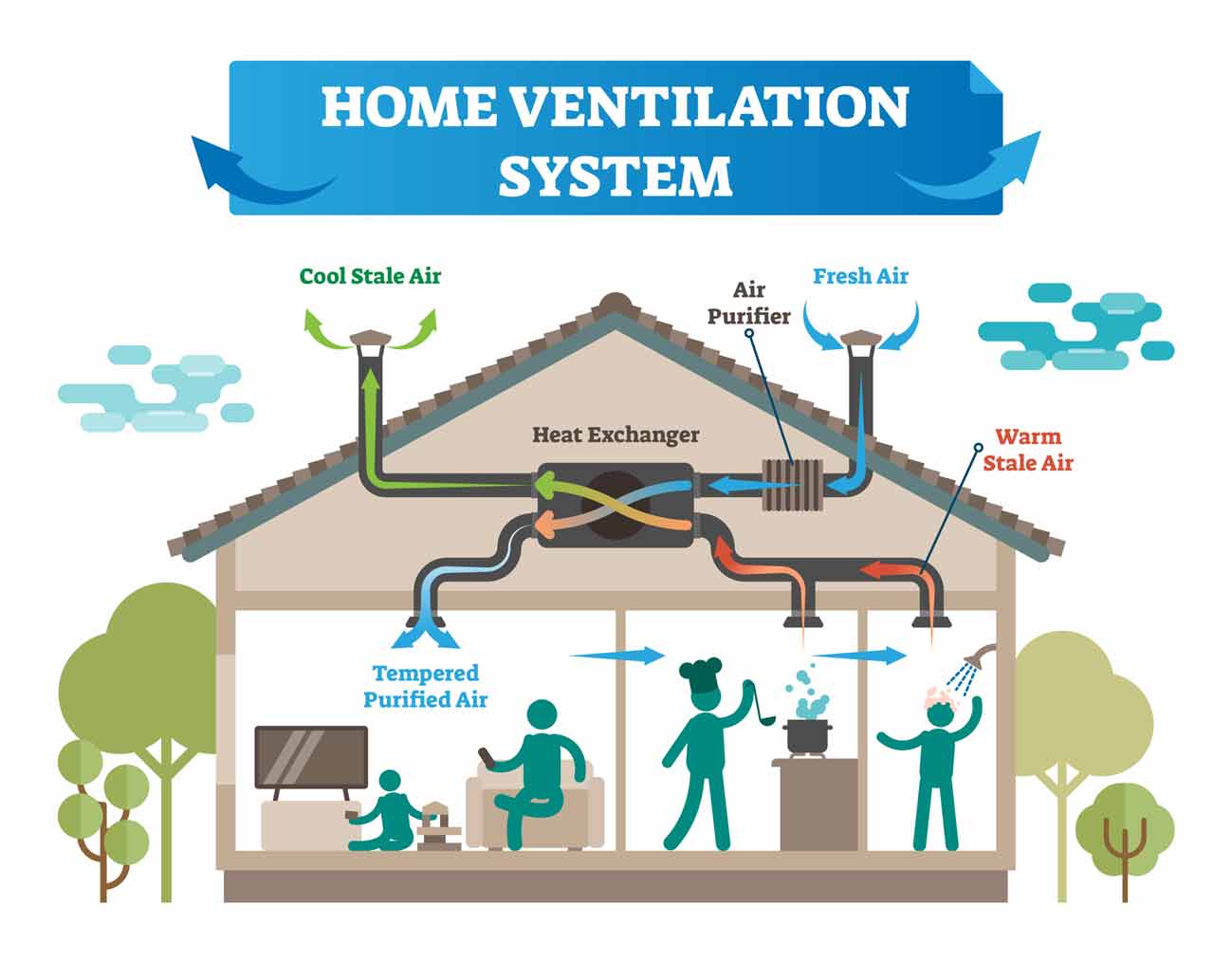Top Strategies to Clean Your HRV Unit
Wiki Article
The All-Inclusive Guide to the Uses of Heat Recovery Ventilation in Modern Structures
Heat Recovery Ventilation (HRV) systems represent a significant innovation in building technology (HRV Heat Recovery Ventilation). They give an approach for exchanging stagnant indoor air with fresh outside air while minimizing energy loss. This approach not just enhances interior air quality yet also adds to power effectiveness in both domestic and industrial structures. Comprehending the numerous applications and benefits of HRV can expose its vital function in modern style and sustainability efforts. The implications of this innovation deserve checking out additionallyRecognizing Heat Recovery Ventilation Equipments

Although several modern-day buildings focus on power effectiveness, understanding warm recuperation air flow (HRV) systems is important for maximizing interior air quality and reducing energy usage. HRV systems work by moving warm from stagnant indoor air to inbound fresh air, effectively preserving comfortable indoor temperatures while minimizing energy loss. These systems contain a warm exchanger, followers, and ductwork that facilitate the circulation of air. Throughout wintertime, HRV systems catch and reuse warm from the outgoing air, while in summertime, they can assist cool down inbound air. By constantly trading air, HRV systems likewise minimize moisture and the focus of interior pollutants. Proper installation and upkeep of HRV systems are crucial for their effectiveness and performance in improving total structure efficiency and convenience.
Advantages of Heat Recovery Ventilation
Heat recovery ventilation systems use countless advantages that boost both energy effectiveness and interior air top quality in modern-day buildings. By capturing and recycling power from exhaust air, these systems significantly minimize heating and air conditioning expenses, resulting in reduced power consumption. Furthermore, they keep a constant circulation of fresh exterior air, minimizing the threat of indoor air contaminants and irritants. This continual exchange assists manage moisture degrees, preventing mold and mildew development and making sure a much healthier living atmosphere. Additionally, HRV systems add to sustainability goals by lowering overall carbon impacts. Their capability to enhance ventilation without compromising thermal convenience makes them a beneficial enhancement to contemporary building design, advertising both economic and environmental advantages.Applications of HRV in Residential Buildings
As property owners significantly focus on energy effectiveness and interior air top quality, the applications of warmth recovery air flow (HRV) systems in household structures have come to be more widespread. HRV systems are specifically valuable in tightly sealed homes, where keeping fresh air circulation is vital for protecting against moisture buildup and indoor pollutants. They successfully move warmth from outbound stale air to inbound fresh air, lowering power prices related to cooling and heating. In addition, HRVs can improve comfort levels by controling humidity and temperature. They are additionally adaptable for numerous property styles, consisting of single-family homes and multi-unit structures. In general, integrating HRV systems supports lasting living techniques while making certain a much healthier interior environment for occupants.HRV in Commercial and Commercial Settings
In commercial and industrial settings, the execution of heat recuperation ventilation (HRV) systems has actually ended up being progressively essential for optimizing power performance and keeping air high quality. These systems successfully transfer warm from exhaust air to incoming fresh air, decreasing the requirement for extra heating or cooling. This not only decreases power you can find out more costs yet additionally contributes to sustainability initiatives. Industries such as production, warehousing, and office complex benefit substantially from HRV systems, as they assist regulate temperature level and moisture levels, making certain a comfortable and productive setting. HRV systems help in removing pollutants and excess wetness, enhancing interior air high quality. As policies around air top quality become more stringent, the fostering of HRV innovation is likely to expand, making it an essential element of modern-day commercial and commercial infrastructure.Future Patterns in Heat Recovery Ventilation Technology

Often Asked Concerns
Just How Does Heat Recovery Ventilation Influence Indoor Air Top Quality?
Heat recovery ventilation greatly improves indoor air high quality by constantly trading stagnant interior air with fresh outside air while recuperating power. This process decreases toxins, preserves suitable humidity degrees, and guarantees a healthier environment for occupants.Can HRV Systems Be Mounted in Existing Structures?
HRV systems can indeed be mounted in existing buildings. Retrofitting might call for adjustments to ductwork and air flow layouts, yet it substantially enhances power performance and indoor air quality, making it a viable alternative for older structures.What Upkeep Is Required for HRV Solutions?

Are There Specific Climates Where HRV Is A Lot More Reliable?
Heat recovery ventilation systems are specifically effective in environments with substantial temperature level distinctions between periods. These systems maximize energy performance by recuperating warm from exhaust air, making them perfect for both cool and moderately warm environments.How Do HRV Systems Affect Energy Costs?

Report this wiki page